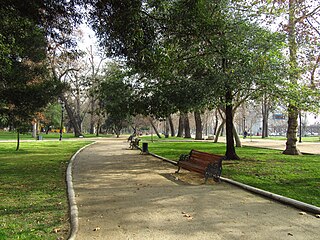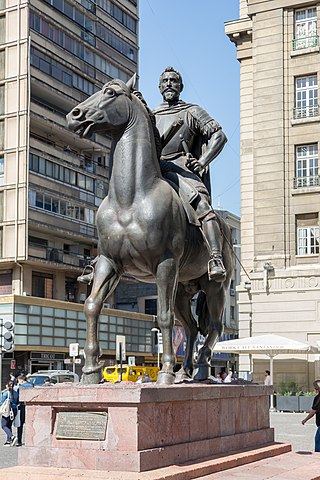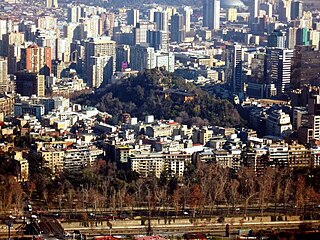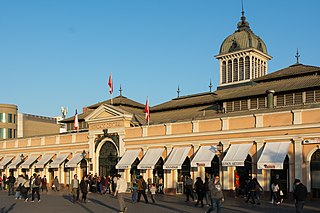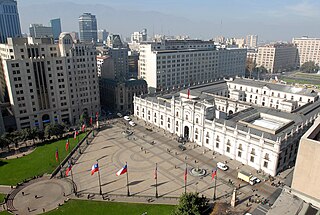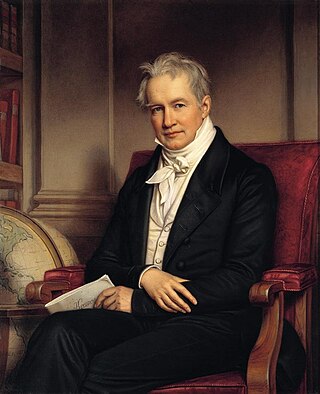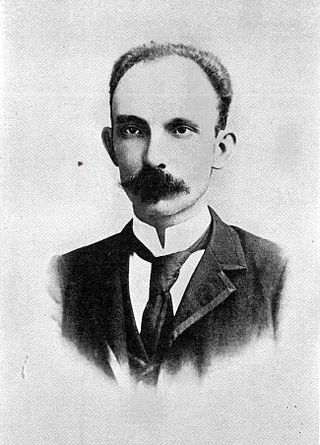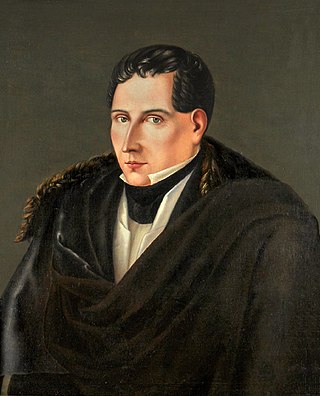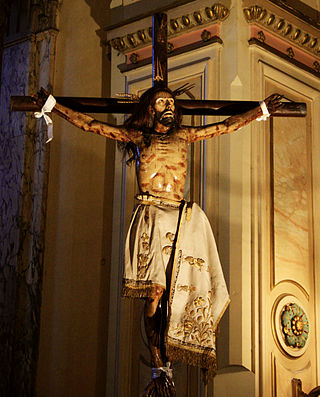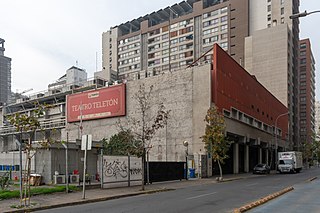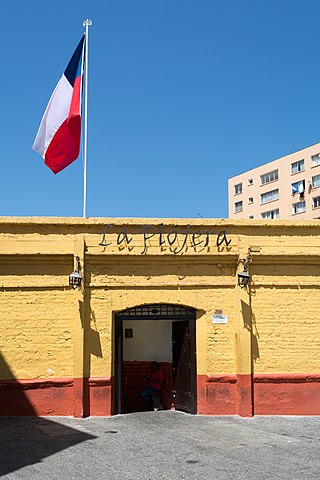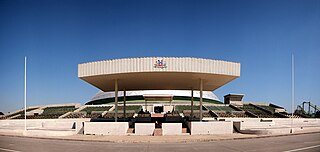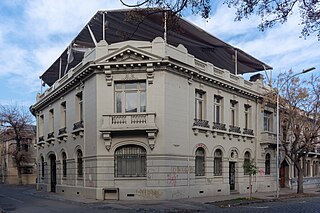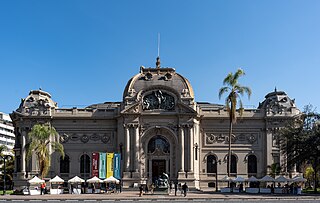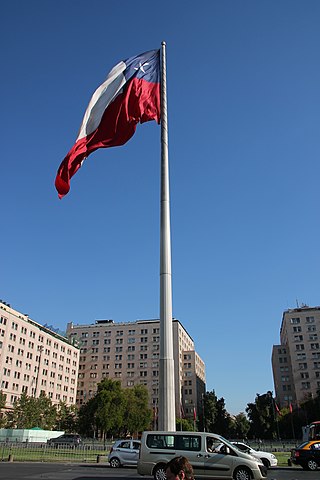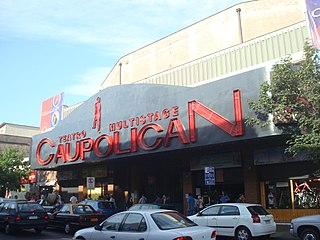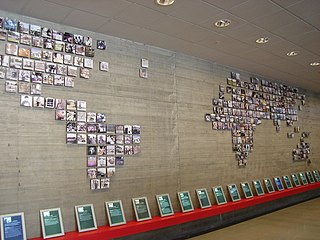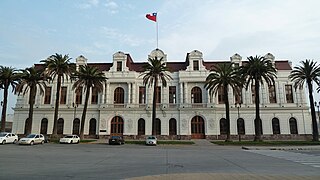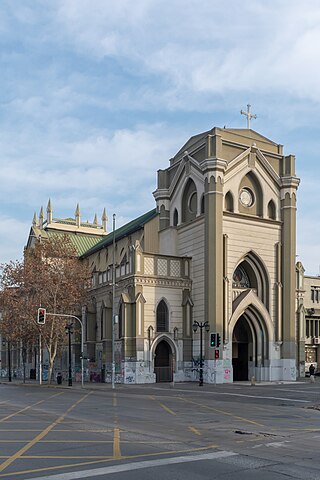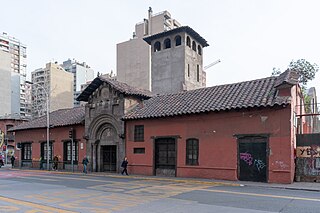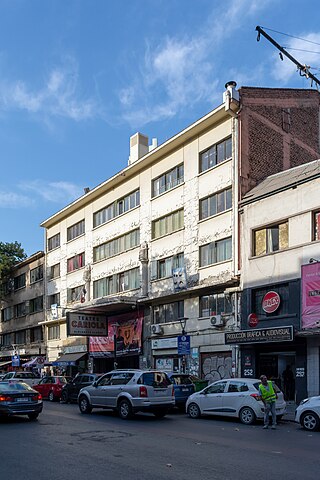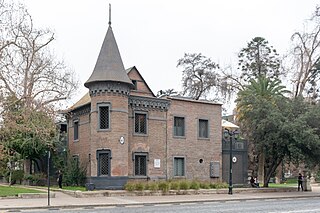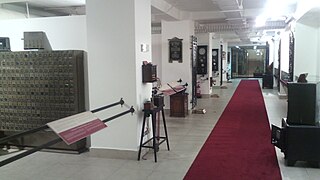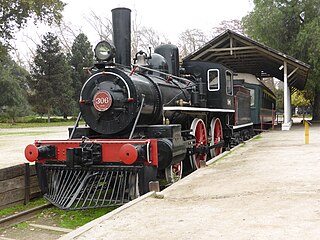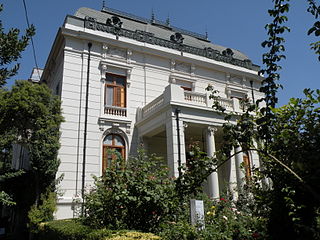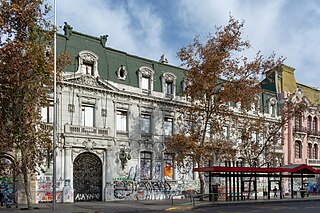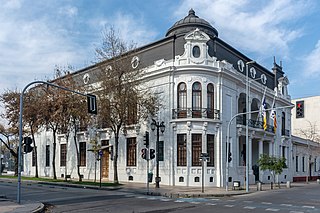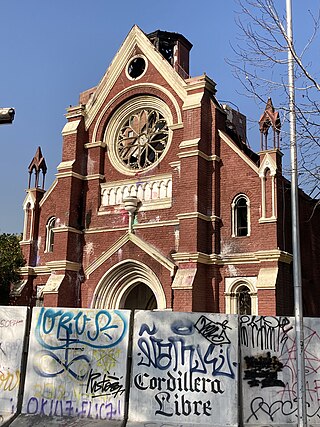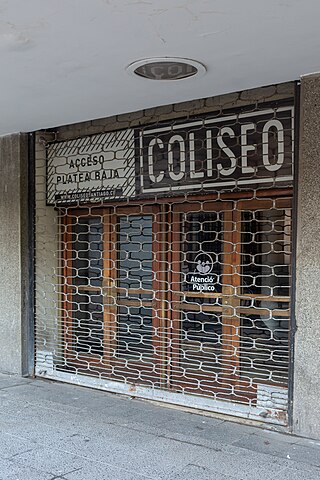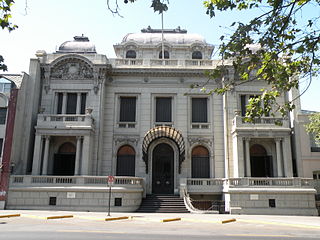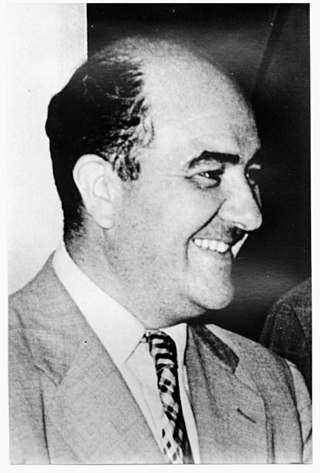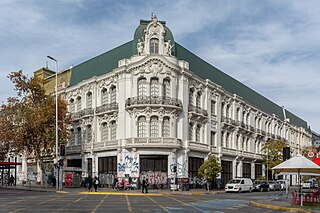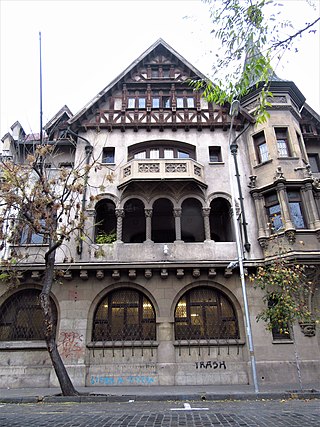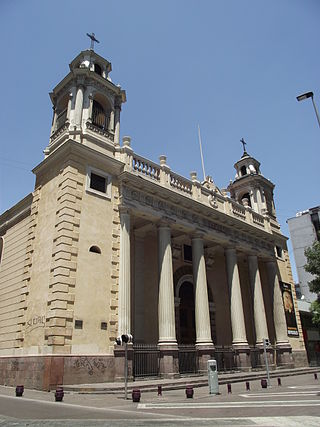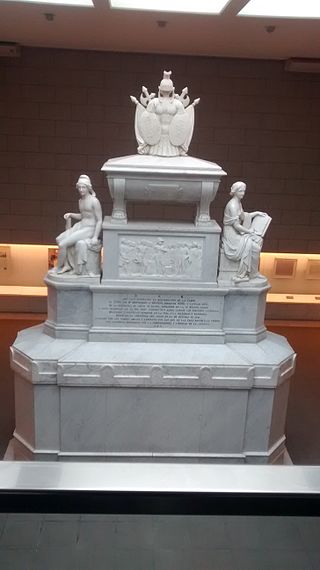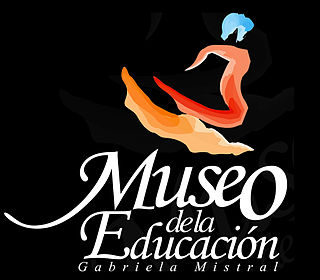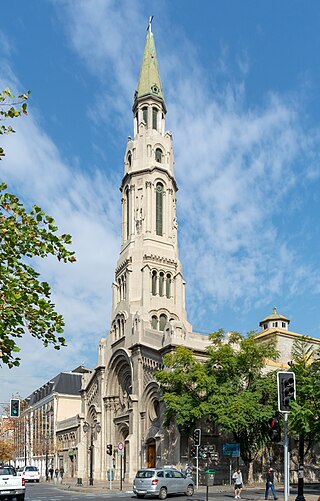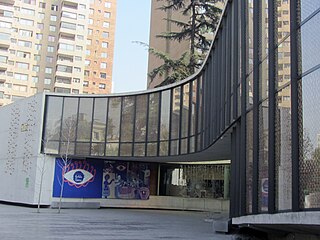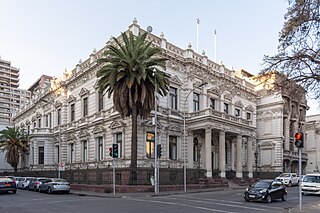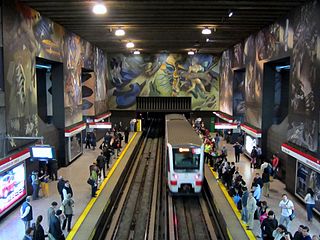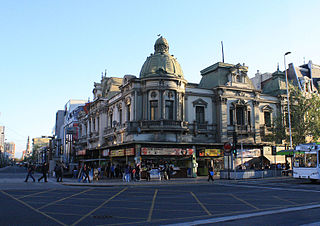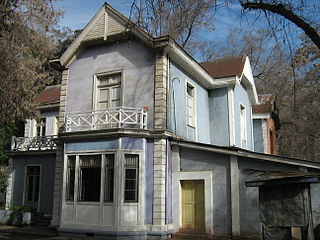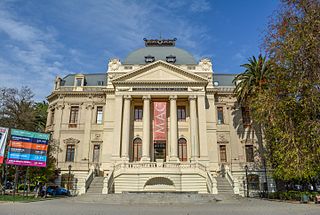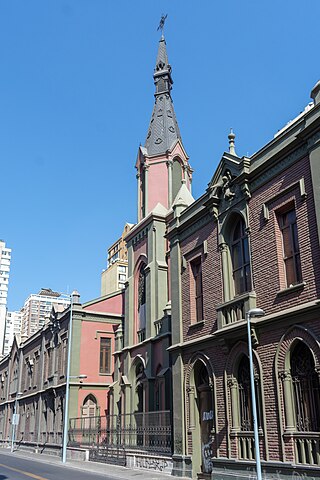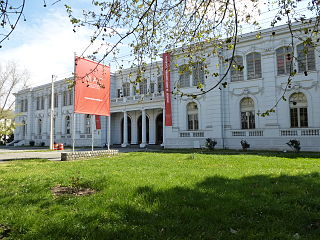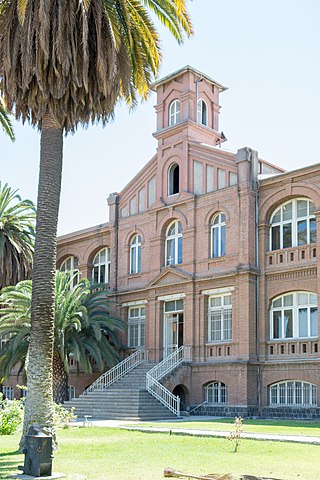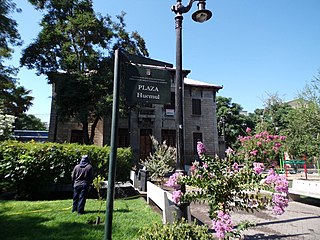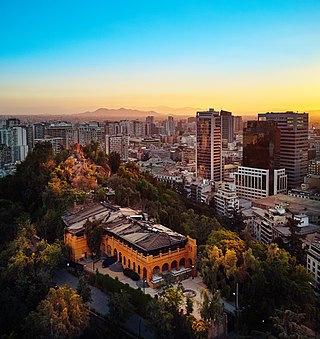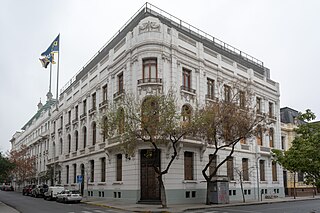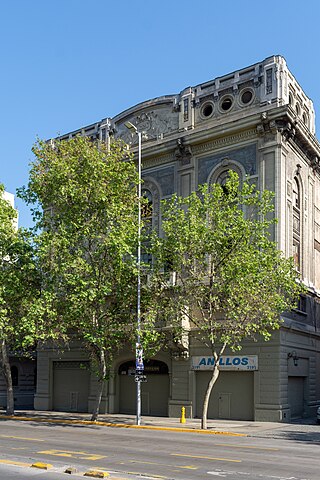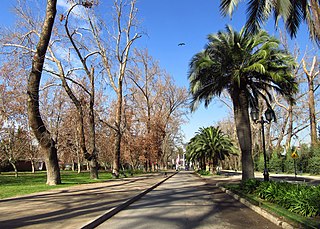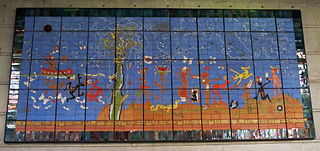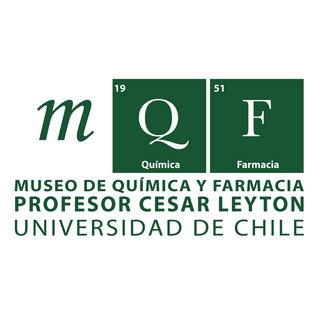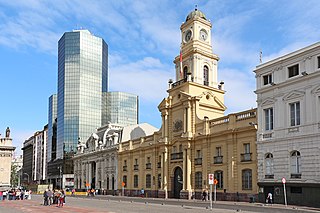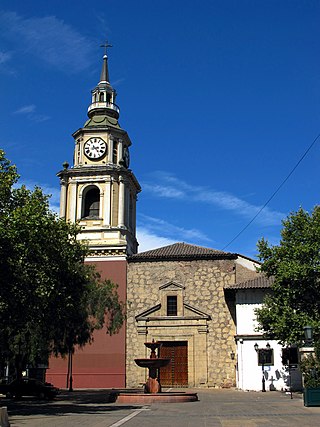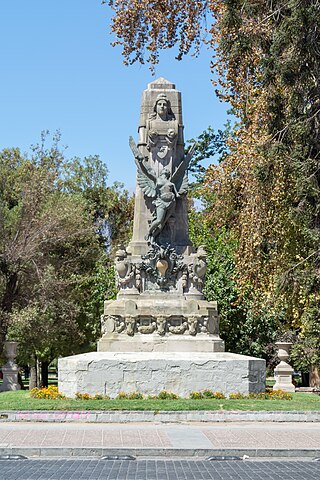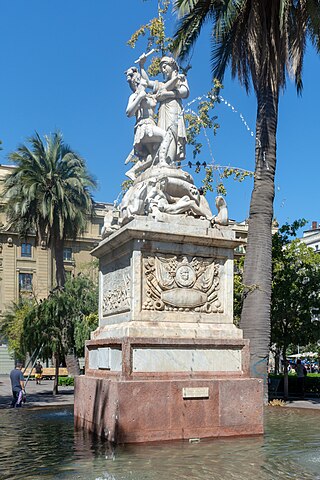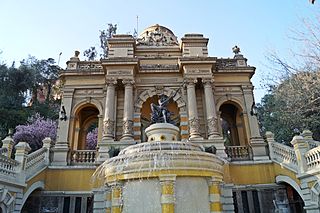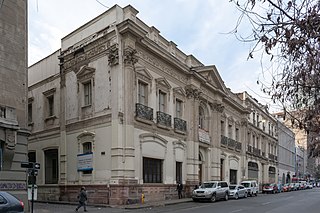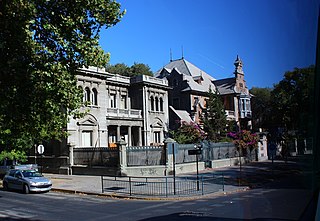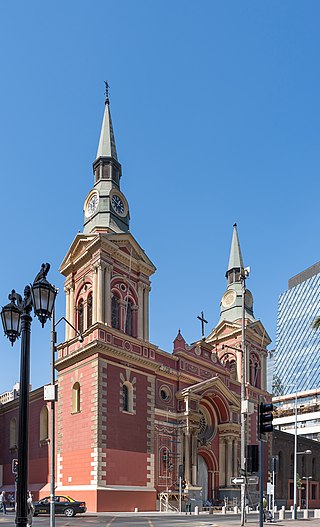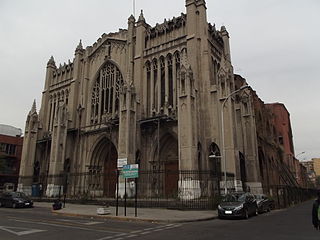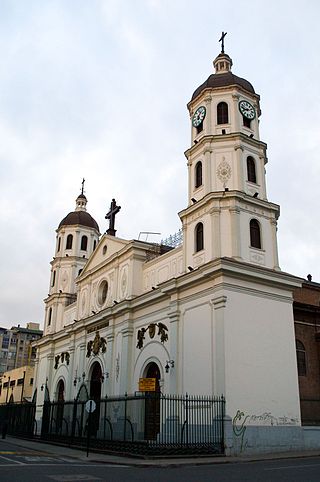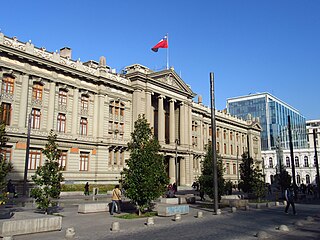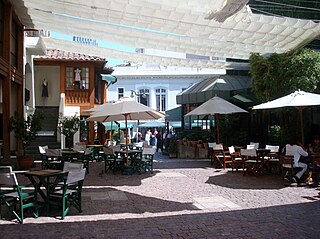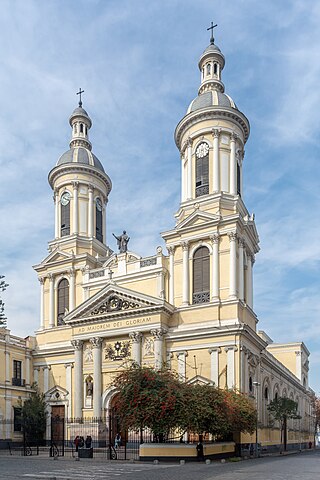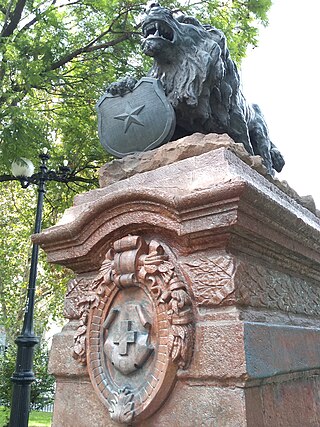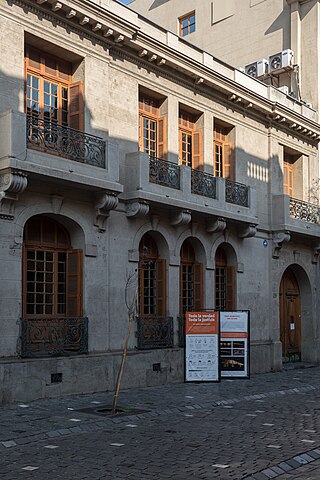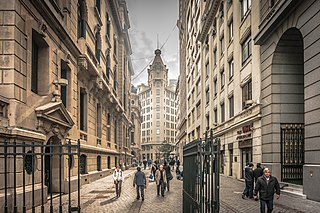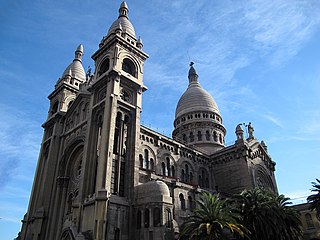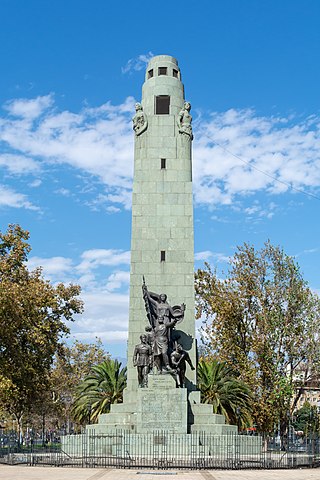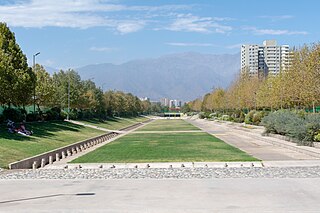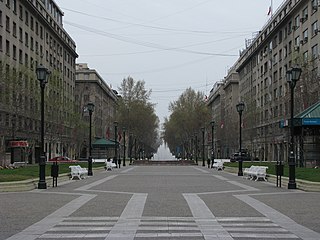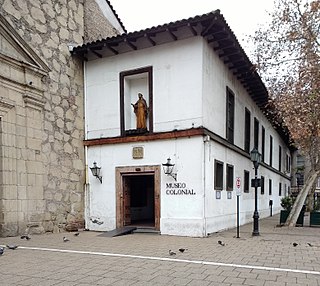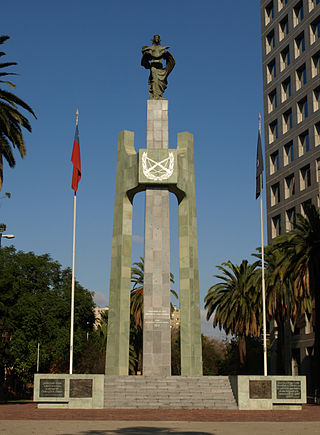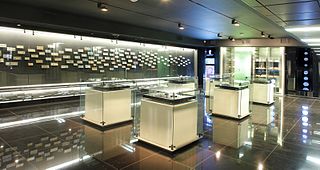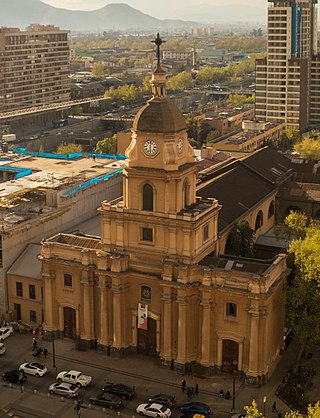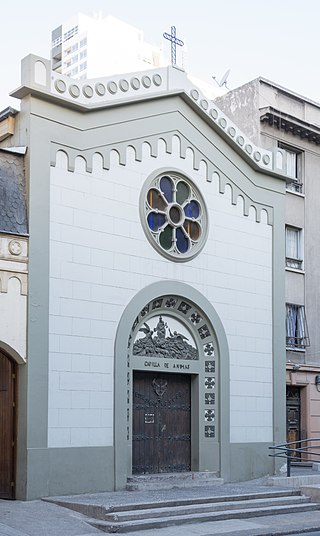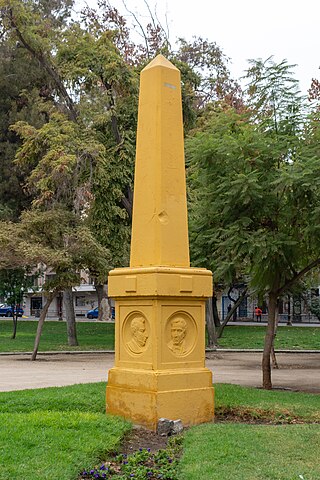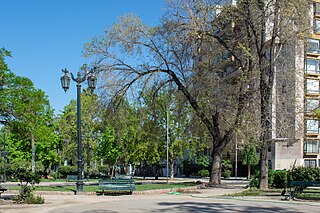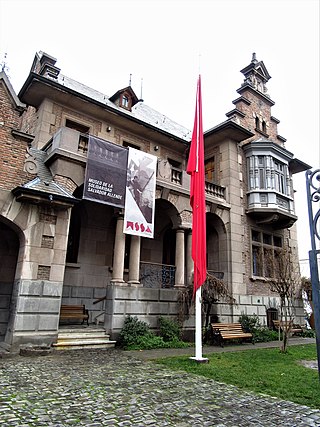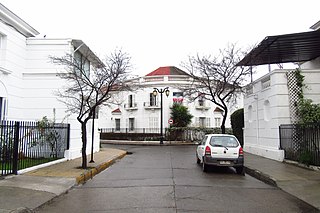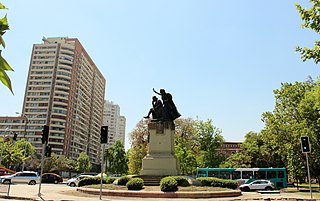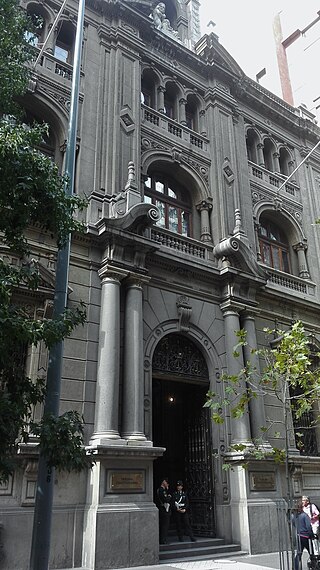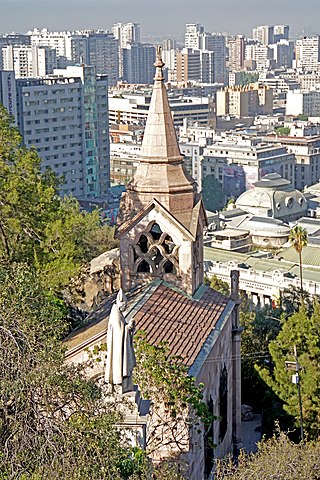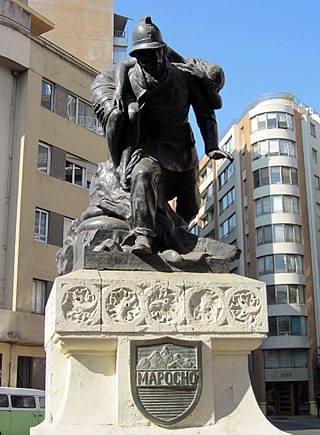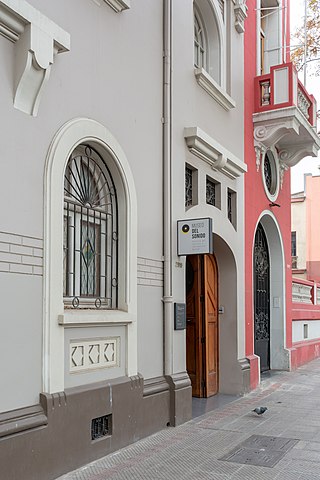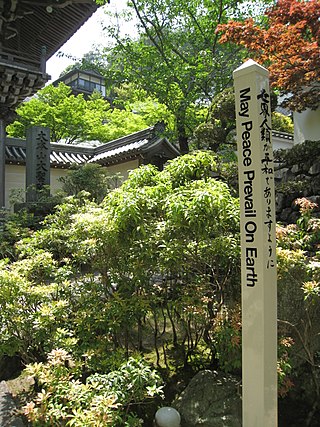99 Sights in Santiago, Chile (with Map and Images)
Legend
Premium Sights
Book tickets, guided tours and activities in Santiago.
Guided Free Walking Tours
Book free guided walking tours in Santiago.
Welcome to your journey through the most beautiful sights in Santiago, Chile! Whether you want to discover the city's historical treasures or experience its modern highlights, you'll find everything your heart desires here. Be inspired by our selection and plan your unforgettable adventure in Santiago. Dive into the diversity of this fascinating city and discover everything it has to offer.
Sightseeing Tours in SantiagoActivities in SantiagoParque Forestal is an urban park in the city of Santiago, Chile. The park was created on reclaimed land from the Mapocho River and is located in the historical downtown of Santiago, west of Plaza Baquedano and east of Estación Mapocho. It is bordered on the north by Santa María Avenue, on the south by Merced Street and Ismael Valdés Vergara Street. At its eastern end, the park becomes Balmaceda Park, forming an almost unbroken stretch of greenery along the Mapocho River.
The equestrian statue of Pedro de Valdivia, located in the Plaza de Armas of the city of Santiago, Chile, is a bronze sculpture that represents the conquistador Pedro de Valdivia with the founding act of the capital. The work of sculptor Enrique Pérez, it was inaugurated on July 25, 1963 in its original location at the northern access to Santa Lucía Hill.
Santa Lucía Hill, also known in Mapuche as Huelén Hill, is a small hill in the centre of Santiago, Chile. It is situated between Alameda del Libertador Bernardo O'Higgins in the south, Santa Lucía Street in the west and Victoria Subercaseaux on the east. An adjacent metro station is named after it. The hill has an altitude of 629 m and a height of 69 m over the surrounding area. The hill is the remnant of a volcano 15 million years old.
The Mercado Central de Santiago is the central market of Santiago de Chile. It was opened in 1872 and Fermín Vivaceta was in charge of its construction. The market replaced the Plaza del Abasto, which was destroyed by a fire in 1864.
The Plaza de la Constitución is a plaza occupying a full square block in the heart of the civic district of Santiago, Chile. It is located in front of the northern facade of the Palacio de la Moneda and is surrounded by other government buildings such as those housing the Ministry of Finance, Ministry of Foreign Affairs, Ministry of Justice, Banco Central de Chile and the Intendencia de Santiago. The square is bounded by Moneda Street on the south, Morandé Street on the east, Agustinas Street on the north, and Teatinos Street on the west.
6. Alexander Von Humboldt
Friedrich Wilhelm Heinrich Alexander von Humboldt was a German polymath, geographer, naturalist, explorer, and proponent of Romantic philosophy and science. He was the younger brother of the Prussian minister, philosopher, and linguist Wilhelm von Humboldt (1767–1835). Humboldt's quantitative work on botanical geography laid the foundation for the field of biogeography, while his advocacy of long-term systematic geophysical measurement pioneered modern geomagnetic and meteorological monitoring. Humboldt and Carl Ritter are both regarded as the founders of modern geography as they established it as an independent scientific discipline.
7. José Martí
José Julián Martí Pérez was a Cuban nationalist, poet, philosopher, essayist, journalist, translator, professor, and publisher, who is considered a Cuban national hero because of his role in the liberation of his country from Spain. He was also an important figure in Latin American literature. He was very politically active and is considered an important philosopher and political theorist. Through his writings and political activity, he became a symbol of Cuba's bid for independence from the Spanish Empire in the 19th century, and is referred to as the "Apostle of Cuban Independence". From adolescence on, he dedicated his life to the promotion of liberty, political independence for Cuba, and intellectual independence for all Spanish Americans; his death was used as a cry for Cuban independence from Spain by both the Cuban revolutionaries and those Cubans previously reluctant to start a revolt.
8. Diego Portales
Diego José Pedro Víctor Portales y Palazuelos was a Chilean statesman and entrepreneur. As a minister of president José Joaquín Prieto's government, he played a pivotal role in shaping the state and politics in the 19th century, delivering with the Constitution of 1833 the framework of the Chilean state for almost a century. Portales' influential political policies included unitarianism, presidentialism and conservatism which led to the consolidation of Chile as a constitutional, authoritarian republic with the franchise restricted to upper class men.
9. Cristo de Mayo
The Lord of Agony, popularly known as Christ of May or Lord of the Tremors, is a venerated wooden crucifix of Chilean Baroque and colonial sacred art, guarded by the Augustinian friars in the Church of San Agustín. The sculpture was carved in 1613 by Fray Pedro De Figueroa O.S.A. and was the first by a known author in Chile. After the Earthquake of 1647, an annual procession began that became the oldest tradition in the country. The figure has also been related to Catalina de los Ríos y Lísperguer.
10. Teatro Teletón
The Telethon Theater is a theater in the city of Santiago de Chile, owned by the Telethon Chile Foundation. It is located on Mario Kreutzberger streets, almost on the corner with San Martín, near the Santa Ana Metro station, and next to the Central Highway.
11. Javiera Carrera
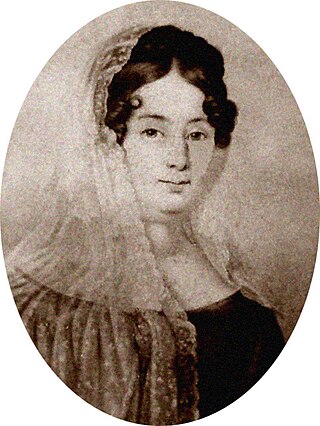
Francisca Xaviera Eudoxia Rudecinda Carmen de los Dolores de la Carrera y Verdugo, better known as Javiera Carrera, was a Chilean independence activist. Together with her brothers José Miguel, Juan José and Luis, she was one of the leading figures of the early Chilean struggle for independence during the period known as the Patria Vieja. She is credited with having sewn the first national flag of Chile and is considered to be the "Mother of Chile".
12. La Piojera
La Piojera is a well-known chingana from Chinatown, near Mapocho Station, in the commune of Santiago (Chile). It is located on Aillavilú Street, almost in front of the Central Market. It is a famous "picá" in Chile, a symbol of the "guachaca culture" and the "republican spirit", that is, an icon of the so-called Chileanness.
13. O'Higgins Park
O'Higgins Park, covering approximately 75 hectares, is Santiago, Chile's second largest public park after Metropolitan Park. It is situated in the center of the capital city, within the Santiago Commune.
14. Palacio Concha
The Concha Palace is a French-style mansion that is located in the gardens of what was the demolished Palacio Concha-Cazotte in the patrimonial Concha and Toro neighborhood of Santiago de Chile. Built in 1920, Enrique Renard Gómez de Silva, after the Concha-Cazotte decayed and was divided into lots by Enrique Concha and Toro's widow, has been restored to its original form and is used as an event center.
15. Museo Nacional de Bellas Artes
The Chilean National Museum of Fine Arts, located in Santiago, Chile, is one of the major centers for Chilean art and for broader South American art. Established in 1880, the organization is managed by the Artistic Union.
Wikipedia: Chilean National Museum of Fine Arts (EN), Website
16. Bandera Bicentenario
The Bicentennial Flag is a monumental Chilean flag located in the central flag of the Alameda del Libertador Bernardo O'Higgins, in the Plaza de la Ciudadanía, located in the city of Santiago, capital of Chile.
17. Teatro Caupolicán
Teatro Caupolicán is a theatre and music venue located on the San Diego street in Santiago, Chile. It was opened in 1936. During its long history has hosted sporting, political, and cultural events. Currently is an important concert venue for popular Chilean and international artists, with a seating capacity of 4,500 and a total capacity of 5,400.
18. Daniel Zamudio
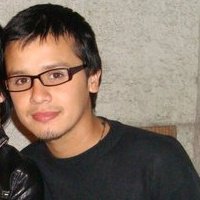
Daniel Mauricio Zamudio Vera was a Chilean man whose murder in 2012 became a symbol against homophobic violence in Chile. Zamudio, who identified as gay, was beaten and tortured for several hours in San Borja Park in downtown Santiago on March 2, 2012, by four attackers linked to a neo-Nazi gang. His death and the subsequent media attention helped accelerate legislation against discrimination and opened doors to greater acceptance and tolerance of differences in the conservative country.
19. Museo de la Memoria y los Derechos Humanos
The Museum of Memory and Human Rights is a museum in Santiago, Chile, which commemorates the victims of human rights violations during the military dictatorship led by Augusto Pinochet between 1973 and 1990. It was inaugurated by then-president Michelle Bachelet on January 11, 2010, as part of government's commemoration of the bicentennial of Chile.
20. Museo Histórico Militar
The Historical and Military Museum of Chile or in its acronym MHM, is an establishment located in the commune of Santiago, Chile. Of a permanent nature, it is a non-profit institution, open to the public and at the service of society and its development. The administration of the museum is in charge of the Garrison of the Chilean Army. It was created to make known to the citizens the military history of Chile and its value as a historical-cultural heritage, the formation of the nation and also to publicize the values and traditions of the Army.
21. Iglesia de la Gratitud Nacional
The National Shrine of Mary Help of Christians, initially named the Church of National Gratitude to the Sacred Heart of Jesus, is a neo-Gothic style temple in Santiago de Chile that is located in the same place where, during colonial times, the hermitage of San Miguel stood.
22. Casa de los Diez
The house of Los Diez is a large house located in the center of Santiago de Chile, built at the end of the colonial era and chosen in 1923 as the headquarters of the so-called Group of the Ten. Located on the corner of Santa Rosa and Tarapacá, it was declared a national monument in September 1997.
23. Centro Cultural Palacio de La Moneda
Centro Cultural Palacio de La Moneda is a cultural facility located in Santiago, Chile, under Plaza de la Ciudadanía, in the southern façade of the Palacio de La Moneda. It is intended to place the Chilean capital in the international cultural circuit, allowing participative and formative access for all citizens to the cultural and audiovisual richness of the nation.
24. Teatro Cariola
The Cariola Theater is a theater located in the commune of Santiago, Province of Santiago, Metropolitan Region of Santiago, Chile. Built between 1949 and 1954 and inaugurated in the latter, it is considered the most important theater in Santiago after the Municipal. It was declared a national monument, under the category of Historical Monument, by Decree No. 548, of the Ministry of Education, on December 17, 2012 and published in the Official Gazette on January 24, 2013.
25. Castillo Forestal
El Castillo Forestal, also known as El Castillito, is a building built at the beginning of the twentieth century and located in the northwest corner of Parque Forestal, in front of the National Museum of Fine Arts in the city of Santiago de Chile. Today, the site is home to the café-restaurant Brasserie du Château Forestal, and the Toy Museum.
26. Museo del Ahorro
The BancoEstado Savings Museum is a Chilean museum founded by Banco del Estado in 1990 and inaugurated on December 22, 1992, and is located in the bank's headquarters at 25 Morandé Street, 2nd underground, in front of the Plaza de la Ciudadanía.
27. Railway Museum
The Santiago Railway Museum is located in the Quinta Normal Park in the capital of Chile. It is managed by the Private Corporation for the Dissemination of Science and Technology. It has one of the main railway collections of steam locomotives in South America.
28. Palacio Astoreca
The Astoreca Palace is a building located on Calle Dieciocho, between Padre Felipe Gómez de Vidaurre and Padre Alonso de Ovalle streets, Santiago de Chile. In French style, it currently houses the College of Accountants of Chile.
29. Palacio Irarrázabal
The Irarrázabal Palace or the Spanish Circle Palace is an old residential palace located in Santiago de Chile and current headquarters of the Spanish Circle Social Center of Santiago. It was designed by Chilean architect Alberto Cruz Montt for the Irarrázabal Fernández family in 1906.
30. Palacio Piwonka Jilabert
The Piwonka Palace is a building located at 412 Ejército Avenue in front of the church of San Lázaro in the Santiago district of the capital of Chile. It is one of the palaces that is part of the Eighteenth neighborhood and is used as a Central House by the Diego Portales University (UDP), which restored it while maintaining its initial attributes.
31. Bernardo O'Higgins

The monument to Bernardo O'Higgins is a sculptural bronze work on a marble base, which represents the moment when Bernardo O'Higgins crosses with his horse on an enemy defeated from the realistic troops in the battle of Rancagua in 1814. Find in La Alameda in front of the Palacio de La Moneda, in the Plaza de la Ciudadía de la Ciudad de Santiago, Chile.
Wikipedia: Monumento a Bernardo O'Higgins (Santiago de Chile) (ES)
32. Parroquia San Francisco de Borja
The church of San Francisco de Borja, former chapel or church of the Sacred Heart of Jesus of the San Borja Hospital, is a neo-Gothic Catholic temple of 1876, which is intended for the religious service of the Carabineros de Chile. It is located at 160 Carabineros Street, behind the Gloria y Victoria monument and the Alameda Bernardo O'Higgins at number 239.
Wikipedia: Iglesia de San Francisco de Borja (Santiago de Chile) (ES)
33. Teatro Coliseo
The Teatro Coliseo is a concert hall located on Nataniel Cox Street next to the Plaza de la Ciudadanía, in the center of the city of Santiago, Chile. With two stalls, it has a capacity of 2500 people.
34. Palacio Ariztía
The Ariztía Palace is a historic building in the city of Santiago de Chile, it was the seat of the Chamber of Deputies in Santiago, until 2006, when its dependencies and that of the Senate returned to the building of the former National Congress of Chile.
35. Jardín Chileno Carlos Muñoz Pizarro
Carlos Muñoz Pizarro was a Chilean botanist born in the city of Coquimbo and deceased on May 12, 1976 in New York City. He was well known for his studies of the Chilean flora, its conservation and as university professor.
36. Palacio Íñiguez
The Íñiguez Palace or Íñiguez Building is a building located in Santiago, the capital of Chile, on the corner of Avenida Alameda Bernardo O'Higgins and Calle Dieciocho. Built in 1908 for Eduardo Iñiguez Tagle and Loreto Undurraga as their residence, it was the work of architects and builders Alberto Cruz Montt and Ricardo Larraín Bravo.
37. Casona Cienfuegos 41
Cienfuegos 41 is a building built in 1926 and designed by Ismael Edwards Matte and Federico Bieregel, the first being the first owner of it. It includes 1700 m² built on a land of 935 square meters, designed under the neo -Gothic and medieval style. [Required quotation]
38. Church of Saint Augustine
Iglesia de San Agustín — Our Lady of Grace, commonly known as Church of St Augustine or Templo de San Agustín, is owned by the Order of Saint Augustine. It is a Catholic church, located at the southeast corner of Agustinas and Estado streets, in downtown Santiago, Chile.
39. Altar de la Patria
The Altar of the Homeland is a Chilean monument located under the Plaza de la Ciudadanía in Santiago de Chile, between Nataniel Cox and Zenteno streets. The work consists of a crypt located under where the "Eternal Flame of Freedom" was originally located, until its transfer to the Military School in 2004. It contains the remains of Chile's Supreme Director, Bernardo O'Higgins, and a timeline that tells the history of that country.
40. Pirámide del Camino de San Pablo
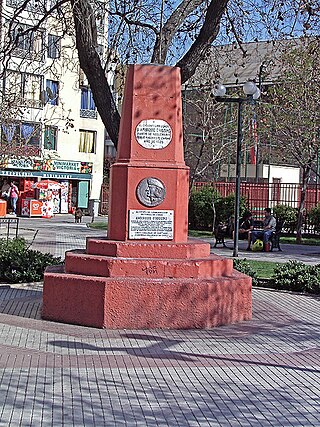
The Pyramid of the Camino de San Pablo is a monument built in Santiago de Chile to commemorate the construction of the Camino de San Pablo to facilitate transit between Santiago and Valparaíso. It is currently located on San Pablo Street with Almirante Barroso.
41. Palacio Errázuriz Urmeneta
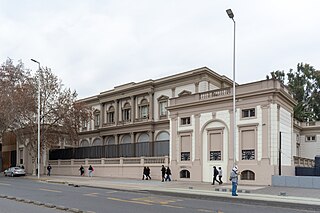
The Errázuriz Urmeneta Palace is a neoclassical-inspired building located at 1656 Libertador Bernardo O'Higgins Avenue in Santiago de Chile, in the heart of the Dieciocho neighborhood, a favorite place of Santiago's high society of the nineteenth century. It was built by the Italian architect Eusebio Chelli at the request of the surveyor and politician Maximiano Errázuriz Valdivieso in 1872. The mansion dazzled the society of the time with its luxury and was cataloged by many as the best house in Santiago, placing it above the Cousiño Palace.
42. Museo de la Educación Gabriela Mistral
The Gabriela Mistral Education Museum (MEGM) was founded on September 13, 1941 and operates in the west wing of the former Normal School of Preceptors, located at the intersection of Chacabuco and Compañía de Jesús streets, in the Yungay neighborhood of the commune of Santiago, Chile.
43. Iglesia San Lazaro
The church of San Lázaro is a Catholic temple dedicated to San Lázaro located on Calle Ejército Libertador corner Gorbea, in the center of the city of Santiago, Chile. Inaugurated on August 15, 1930, it is under the administration of the Order of the Mother of God. It was declared a National Monument of Chile, in the category of Historical Monument, by Supreme Decree No. 21, of January 16, 1992.
44. Museo Violeta Parra
The Violeta Parra Museum is an art museum and cultural center located in the commune and city of Santiago, Chile. Inaugurated on October 4, 2015, it seeks to preserve and promote the work of Chilean artist Violeta Parra.
45. Palacio Edwards
The Edwards Palace, also known as the September Club Palace, is a property located in Santiago de Chile, specifically on the northeast corner of Catedral and Morandé, in front of the gardens of the former National Congress building.
46. Memoria Visual de una Nación
Visual Memory of a Nation is a mural made by the Chilean painter Mario Toral, of 1200 square meters, thematically divided into two parts: Past and Present, which correspond to the eastern and western sectors of the Universidad de Chile station at the level of the platforms, separated by the mesanine. The great pictorial piece recreates as a "true visual narrative" the general history of Chile, rescuing its most significant milestones from the perspective of the artist, who develops a work heir to the Latin American mural tradition, founded in Mexico at the beginning of the twentieth century.
47. Palacio Aldunate
The Aldunate Palace is a neoclassical building located in Santiago de Chile, on the corner of Alameda de las Delicias and Calle Ejército Libertador. It was built for Luis Aldunate by the architect José Benito Mannheim.
48. Museo Infantil
The Children's Museum is a museum located in the Quinta Normal Park in the city of Santiago, Chile. It is managed by the Private Corporation for the Dissemination of Science and Technology (Corpdicyt). It is aimed at children from 2 to 13 years of age.
49. Museum of Contemporary Art
The Santiago Museum of Contemporary Art is located in Santiago, Chile. It is one of the city's major museums, created in 1947, and is run by the University of Chile Faculty of Arts. Since 2005, the museum has had two separate sites: MAC Parque Forestal and MAC Quinta Normal Park.
Wikipedia: Santiago Museum of Contemporary Art (EN), Website
50. Iglesia de San Pedro
The Church of San Pedro is a temple Catholic street located on Mac-Iver Street, in the center of the city of Santiago, Chile. Designed by the architect Emilio Doyère, and inaugurated in 1896, it is under the administration of the Congregation of Our Lady of Charity of the Good Shepherd. The church was declared a historical monument by Supreme Decree No. 705 of October 8, 1990.
51. Museo de Arte Contemporaneo
The Versailles Palace is a building located in the Quinta Normal Park in the city of Santiago, Chile. It was built in 1918 as the headquarters of the National Society of Agriculture (SNA), later becoming the headquarters of the Faculty of Agronomy of the University of Chile, and an outpatient clinic of the San Juan de Dios Hospital, until since 2005 it has housed the Quinta Normal headquarters of the Museum of Contemporary Art. It was declared a National Monument of Chile, in the category of Historic, by exempt decree No. 949, of November 5, 2004, promulgated during the government of President Ricardo Lagos.
52. Ex Asilo de las Hermanitas de los Pobres de Santiago
The Asylum of the Little Sisters of the Poor of Santiago is a building located on Carmen Street at the corner of Ventura Lavalle, in the center of the city of Santiago, Chile. Built in 1898, it functioned as a convent and as an asylum until the earthquake of 2010, which left the building with serious damage, having to be evicted. It was declared a National Monument of Chile, in the category of Historical Monument, by Decree No. 151, of March 19, 2012. Then, in 2017, it was acquired by the Mayor of Santiago, Felipe Alessandri Vergara, for the Municipality, to be transformed into a Town Hall Building and Community Center for the residents of the Matta Sur sector. It is expected to open its doors in 2023.
Wikipedia: Asilo de las Hermanitas de los Pobres de Santiago (ES)
53. Teatro Huemul
The Huemul Theater is an old theater located at 1367 Bio Street, in the Huemul neighborhood, in the city of Santiago de Chile. It was declared a National Monument in the category of Historical Monument in March 2016.
54. Castillo Hidalgo
The Hidalgo Castle is a building located at the top of Santa Lucía Hill, in the city of Santiago, Chile. It was built in 1816 by order of the governor of Chile during the Reconquest, Casimiro Marcó del Pont, for the defense of the city, with the name of Santa Lucía Battery. The design and engineering works of the fort or castle were under the direction of the Brigadier of the Royal Corps of Engineers Manuel Olaguer Feliú.
55. Salvador Allende Gossens
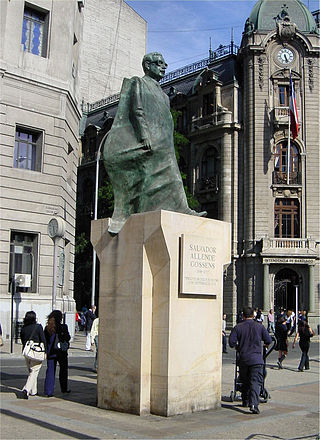
The monument to Salvador Allende is a bronze sculpture located in the Plaza de la Constitución del Palacio de La Moneda, in Santiago de Chile inaugurated in 2000 as a tribute to President Salvador Allende in his birth. The 3 -meter sculpture was sculpted by the artist Arturo Hevia. Its inauguration was carried out with the presence of President Ricardo Lagos.
Wikipedia: Monumento a Salvador Allende (Santiago de Chile) (ES)
56. Palacio Eguiguren
The Placio Eguiguren is a building located in Santiago de Chile, which is currently used as the headquarters of Duoc Padre Alonso de Ovalle, being one of the oldest of DuocUC, an institution of higher education.
57. Antiguo Teatro Carrera
The Carrera Theater is an old theater located in the Concha y Toro neighborhood, specifically on Libertador General Bernardo O'Higgins Avenue, between Maturana and Concha y Toro streets, in the center of the city of Santiago, Chile. Opened in 1927, a restaurant and bar has been operating in the place since 2012. The theater was declared a National Monument of Chile, in the category of Historical Monument, by Decree No. 487, of September 29, 1989.
58. Parque Quinta Normal
Quinta Normal Park is an urban park in the city of Santiago, Chile. The park is in a commune, or district of the same name, Quinta Normal. The park is bounded by Matucana Avenue to the east, Portales Avenue to the south and Santo Domingo Street to the north. It is home to several museums, including the Chilean National Museum of Natural History. Near the park is the Museum of Memory and Human Rights. The park is also near a public library.
59. Verbo América
Verbo América is a mural created by Chilean painter Roberto Matta in 1996. The work was donated by the artist to his native country with the aim of being appreciated by as many compatriots as possible. It is located in the Quinta Normal station of the Santiago Metro.
60. Museo de Química y Farmacia
The Professor César Leyton Caravagno Museum of Chemistry and Pharmacy was created in 1951 at the Faculty of Chemistry and Pharmacy of the University of Chile. At that time he sought to portray the aesthetics of the old apothecaries, then this objective was expanded to preserve the historical legacy of the development of chemical and pharmaceutical sciences. It is the only museum in Chile dedicated to the history of Pharmacy and is located at 50 Merced Street in Santiago, in a building that it shares with the College of Chemists-Pharmacists of Chile.
Wikipedia: Museo de Química y Farmacia Profesor César Leyton Caravagno (ES)
61. Museo Histórico Nacional
The Palacio de la Real Audiencia de Santiago is a building located in the north central village of the Plaza de Armas in Santiago, Chile. The building dates back to 1808 and houses, since 1982, the National History Museum of Chile.
62. Iglesia de San Francisco
The San Francisco Church is a Franciscan church on Avenida Libertador General Bernardo O'Higgins, in the downtown of Santiago de Chile. The church, along with the adjacent convent, is one of the oldest colonial-era buildings in the country. It has been resistant to about 15 earthquakes of magnitude over 7.
63. Monumento a la Gloria
The Monument to Gloria or also known as the Monument of the French Colony to the Centenary of the Independence of Chile, is a memorial located in the Forestry Park, in Lastarria Barrio de Santiago, Chile, opposite the National Museum of Fine Arts of Chile. It was designed in conjunction with Chilean sculptor Guillermo Córdova and French architect Henri Grossin. Inaugurated in 1910, it was donated by the French community in Chile on the occasion of the celebrations of the country's Centenary.
64. Monumento a la Libertad Americana
The Monument to American Freedom is a marble sculpture located in the center of the Plaza de Armas in Santiago, Chile. The work of the Italian sculptor Francesco Orselino, it was commissioned by the diplomat Francisco Javier Rosales in 1827, and installed in the square by decree authorized by Diego Portales on April 25, 1836.
65. Fuente Neptuno
The source of Neptune is a monumental source located on the Santa Lucía hill, in the Chilean commune of Santiago Centro, dedicated to the Roman god of the seas, Neptune. The sculpture can be included in the so -called "industrial sculpture", for series of several copies from the same mold. He was commissioned by the Chilean State to France, specifically to the Val D´osne Foundry that takes as a model the one created in 1856-7 by the Frenchman Gabriel-Vital Dubray (1813-1892), and which became world popular during the international exhibition of London in 1862. Its initial destination was the central flag of the Alameda of the Delicias, being installed in 1859, when it was still the main capital walk and its appearance was far from the current one. It is the main ornamentation of entry into hill from Alameda, as part of the city's beautification works. Years later it was placed in the current location during the first century of independent Chile, differentiating itself in the architectural style of colonial chili. The initial design of the work was commissioned to the French architect Victor Henri Villeneuve, and then ended by the Chilean Benjamín Marambio.
66. Palacio Huneeus Valdés
The Huneeus Palace, also called the Huneeus Valdés Palace, is a building located in the center of Santiago de Chile, in front of the building of the former National Congress of Chile and next to the homonymous building, separated from it by the Jorge Huneeus passage, adjoining to the east with the García de la Huerta Izquierdo Palace. Its construction is attributed to the architect Fermín Vivaceta.
67. Casonas de Avenida República
The Casonas de Avenida República are a group of mansions built during the second half of the nineteenth century in the Barrio República, part of the old town of Santiago, in the sector bounded to the north by the Alameda, Ejército to the east, Blanco Encalada to the south and Avenida España to the west.
68. Basílica de la Merced
The Basilica de la Merced is a basilica located in Santiago, Chile. It was founded by the Order of the Blessed Virgin Mary of Mercy, has its origin in the third temple of the Basilica of La Merced that was in this site, built in 1760, its first tower was built in 1859 and its second tower in 1885 completing the building. It is a Chilean National Monument.
69. Basílica del Salvador
The Basílica del Salvador is a basilica located at the corner of Huérfanos Street and Almirante Barroso Street in the Barrio Brasil of Santiago de Chile. The basilica was designed by the German architect Teodoro Burchard in the Neo Gothic style. It was renovated by Josué Smith Solar in 1932.
70. Basílica del Corazón de María
The Basilica of the Heart of Mary is a Catholic Church in the city of Santiago, Chile. Built by the Claretians, it was inaugurated on 7 December 1879, being designated as a basilica in 1929 and as a National Monument of Chile on 14 January 1987.
Wikipedia: Basílica del Corazón de María (Santiago de Chile) (EN), Website
71. Palacio de los Tribunales de Justicia
The Palacio de los Tribunales de Justicia de Santiago is the building housing the Supreme Court of Chile, the Court of Appeals of Santiago, and the Court-martial Court of the Chilean Army, Chilean Air Force and Carabineros de Chile. It occupies a full block-front of Compañía Street between Bandera and Morandé Streets. The building diagonally faces the Palacio de la Real Aduana, which houses the Museo Chileno de Arte Precolombino, and Montt Varas Square sits in front.
Wikipedia: Palacio de los Tribunales de Justicia de Santiago (EN), Website
72. Plaza Mulato Gil de Castro
Plaza Mulato Gil de Castro is located in Barrio Lastarria, between Plaza Baquedano, Parque Forestal and Cerro Santa Lucía in Santiago, Chile. A popular destination for tourists and locals alike, the area is known for its cultural offerings and hosts a number of cafés, bookstores, museums, galleries, cultural centers, theaters and bars in its surrounds. The plaza itself provides access to a cultural center featuring both a visual arts and archeological museum.
73. Iglesia San Ignacio
The iglesia San Ignacio, also known as iglesia del Colegio de San Ignacio, is a Roman Catholic church founded by the Society of Jesus in Santiago, Chile. It is next to the Colegio San Ignacio, and was declared as a National Historic Monument in 2002.
74. León Suizo
The Swiss Lion is a memorial donated by the Swiss community residing in Chile on the occasion of the country's Centennial celebrations at the beginning of the twentieth century. It is located on Avenida Libertador General Bernardo O'Higgins, better known as "La Alameda", between José Miguel Carrera and Almirante Latorre streets, in the district of Santiago Centro.
75. Casa Central Universidad de Chile
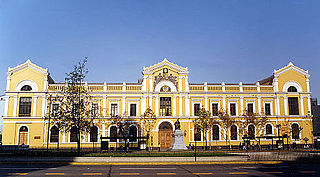
The Casa Central de la Universidad de Chile, also known as Palacio de la Universidad de Chile, is the main building for the Universidad de Chile, and is located at 1058 Alameda Libertador Bernardo O'Higgins, in Santiago, Chile. The building dates from 1872, and currently houses the rectorate, rooms used for ceremonial events and the university's Andrés Bello Archives. It was declared a National Monument of Chile in 1974.
76. Espacio de Memoria Londres 38
Londres 38 is a building that was used by the National Intelligence Directorate (DINA) as a detention and torture center for opponents of Augusto Pinochet's dictatorship. The facility is located in downtown Santiago, Chile, and was known in DINA's jargon by the code name Yucatán.
77. Edificio Ariztía
Edificio Ariztía is a building located at 52 Nueva York Street in downtown Santiago, Chile, on a wedge-shaped city block. It was completed in 1921 and is considered the first "skyscraper" in Santiago. The building, constructed in reinforced concrete, was the first office building in Santiago with an elevator.
78. Basilica de los Sacramentinos
The Basílica de los Sacramentinos is a church in the Roman Catholic Archdiocese of Santiago de Chile. It administered by the Congregation of the Blessed Sacrament and its design was inspired by the Basilique du Sacré-Cœur in Paris. The main cupola of the church has a structural height of 69 m (226 ft).
79. Monumento a los Héroes de Iquique
The Monument to the Heroes of Iquique, also called the Monument of the Naval Glories or the Heroes of the Emerald, is located in the Plaza Capitán Prat, at the intersection of 21 de Mayo and Ismael Valdés Vergara streets, in downtown Santiago, Chile. Inaugurated on May 28, 1962 when Brigadier General (R) Ramón Álvarez Goldsack was mayor and mayor of the city, it was the first monument erected in the country's capital in honor of the heroes of the naval combat of Iquique.
Wikipedia: Monumento a los Héroes de Iquique (Santiago de Chile) (ES)
80. Parque Intercomunal Victor Jara
The Víctor Jara Intercommunal Flood Park is an urban floodable park located parallel to the Zanjón de la Aguada, in the Metropolitan Region of Santiago. It crosses the communes of Macul, San Joaquín, San Miguel, Pedro Aguirre Cerda and Santiago Centro, between Vicuña Mackenna Avenue and the Equestrian Club.
81. Paseo Bulnes
Paseo Bulnes is a pedestrian street in downtown Santiago. It runs from Alameda Avenue in the north to the Almagro Park in the south. The street is lined by buildings of uniform height and similar facades, which were built under an urban plan approved in 1937 and whose main purpose was the development of a government district around the La Moneda Palace. In 1939, the first zoning regulation plan for Santiago proposed the southward extension of the then Avenida Central with a large plaza south of La Moneda, known as Plaza Bulnes. The various buildings were built in an intensive campaign between 1940 and 1950.
82. Museo de Arte Colonial de San Francisco
Museo Colonial is a historical, cultural and religious museum located in Santiago, Chile. The museum explores the colonial period of Chile and South America, with a collection of paintings, sculpture, furniture and other objects. Many of the pieces are religious, and were created in Peru, the former colonial capital. The museum also features a genealogical tree of the Franciscan Order which is "gigantic" in size and includes 644 miniature portraits.
83. Gloria y Victoria
Gloria y Victoria is the name given to the memorial to the martyrs of the Carabineros de Chile who fell in the line of duty. Located at 200 Avenida Libertador General Bernardo O'Higgins, in Santiago, the country's capital, it is made of concrete with stone slab cladding and has a height of 23 m. This work was made by the Chilean sculptor Héctor Román Latorre.
84. Palacio Cousiño
The Palacio Cousiño is a palace that was designed and built for Isidora Goyenechea, widow of Luis Cousiño, who in turn was son of Matías Cousiño. It is located at 438 Dieciocho Street in Santiago, Chile.
85. Museo Numismático
The Numismatic Museum of the Central Bank of Chile is a museum located in Santiago de Chile, dedicated to exhibiting the history of banknotes and coins in the country as well as a collection from different countries. It was inaugurated on May 18, 2012. Previously, during the 1980s, the "Museum of the Monetary History of Chile" existed in the Central Bank, a project that had begun in October 1974 and whose director around 1981 was Ambrosio Andonaegui, and which was not open to the public.
Wikipedia: Museo Numismático del Banco Central de Chile (ES), Website
86. Plaza Brasil
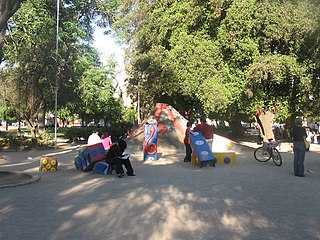
Plaza Brasil is located in Barrio Brasil, a neighborhood of Santiago, Chile known for its strong artistic and cultural scene. The square is bordered by Avenida Brasil to the east, Huérfanos street to the south, Compañía de Jesús street to the north and Maturana street to the west. Access to the square is via the Cumming station of the Santiago Metro.
87. Iglesia Parroquial de Santa Ana
The Iglesia de Santa Ana is a Catholic church in downtown Santiago de Chile. It is located at the northwest corner of Catedral and San Martín streets. The church was declared as a National Monument of Chile in 1970, within the category of Historic Monuments. Santa Ana metro station is named after the church.
88. Capilla de Animas
The Chapel of Animas is a Catholic temple located on Teatinos Street in the center of the city of Santiago, Chile. It was built in 1906, and its origin dates back to the temples built next to roads, so that travelers – in this case passengers arriving from the Mapocho Station – could have a place to pray and deliver offerings for their deceased relatives or the souls in purgatory.
89. Monumento a los Escritores de la Independencia
The Monument to the Writers of Independence, located in the Forest Park of Santiago, the capital of Chile, is a marble obelisk that presents, on each of the faces of its pedestal, a bronze medallion in relief in homage to four writers of the independence of Chile: José Miguel Infante, Manuel José Gandarillas, Manuel de Salas and Camilo Henríquez.
Wikipedia: Monumento a los Escritores de la Independencia (ES)
90. Parque Portales
The Portales Park is an urban park located in the Yungay neighborhood of the Chilean commune of Santiago Centro. His odónimo is in tribute to Chilean politician Diego Portales. Rectangular, it is located between Portales Avenue in the North, Agustinas Street in the South and Matucana Avenue west. In terms of urbanism, it is part of the Portales-Matucana polygon.
91. Museo de la Solidaridad Salvador Allende
The Museum of Solidarity Salvador Allende (MSSA) (Spanish: Museo de la Solidaridad Salvador Allende) is a contemporary art museum located in Santiago, Chile, named after Salvador Allende, president of Chile between 1970 and 1973.
92. Conjunto Virginia Opazo
The Conjunto Virginia Opazo is an architectural ensemble designed by architect Luciano Kulczewski, which is located in the Barrio República, in downtown Santiago, Chile. It consists of 33 two-story terraced houses. The residential subdivision was inaugurated in 1944, and was declared as a National Monument of Chile on November 10, 1992, within the category of Zona Típica.
93. Plaza Ercilla
Plaza Ercilla is an urban park located in the Chilean commune of Santiago, in the Metropolitan Region. Its name is due in homage to the Spanish writer and soldier, Alonso de Ercilla, author of the epic poem La Araucana, which narrates episodes of the beginning of the Conquest of Chile.
94. Edificio de la ex Caja de Crédito Hipotecario
The edificio de la ex Caja de Crédito Hipotecario is a building located at 1234 Huérfanos Street, in downtown Santiago, Chile. Designed by architect Ricardo Larraín Bravo, it was built between 1915 and 1920 for the Caja de Crédito Hipotecario, and as of 2016, it serves as the seat of the Tribunal Constitucional.
Wikipedia: Edificio de la ex Caja de Crédito Hipotecario (EN)
95. Ermita Vicuña Mackenna
The Hermitage of Santa Lucía Hill is a Catholic temple located at the top of the hill, in the center of the city of Santiago, Chile. Inside is the tomb of the mayor of Santiago Benjamín Vicuña Mackenna, the main promoter of the transformation of the hill into an urban park, and his family.
96. Monumento al Bombero Voluntario
The voluntary firefighter monument is a sculptural steel set located near the Forest Park, in the city of Santiago, Chile. He was commissioned by the Illustrious Municipality of Santiago in 1913 to the sculptor Antonio Coll and Pi, on the occasion of the fiftieth anniversary of the creation of the Santiago Fire Department.
97. Museo del Sonido
The Museum of Sound is a museum dedicated to the history of musical recording and reproduction, located in the Yungay neighborhood of the city of Santiago, Chile. Inaugurated in 2019, it was promoted through the Mariana Préndez de Casanueva Foundation after acquiring Arturo Gana's collection of phonographs and gramophones.
98. Poste de la Paz
A peace pole(世界平和祈願柱) is a monument that displays the message "May Peace Prevail on Earth" in the language of the country where it has been placed, and usually 3 to 13 additional translations. The message often is referred to as a peace prayer.
99. Edificio Tucapel Jiménez
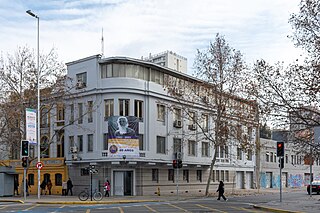
The Tucapel Jiménez Building is the headquarters of the National Association of Fiscal Employees (ANEF). Located on Avenida Libertador General Bernardo O'Higgins, in the center of the city of Santiago, Chile, the building was declared a national monument of Chile, in the category of historical monument, by Decree No. 346, of December 1, 2016.
Share
How likely are you to recommend us?
Disclaimer Please be aware of your surroundings and do not enter private property. We are not liable for any damages that occur during the tours.
